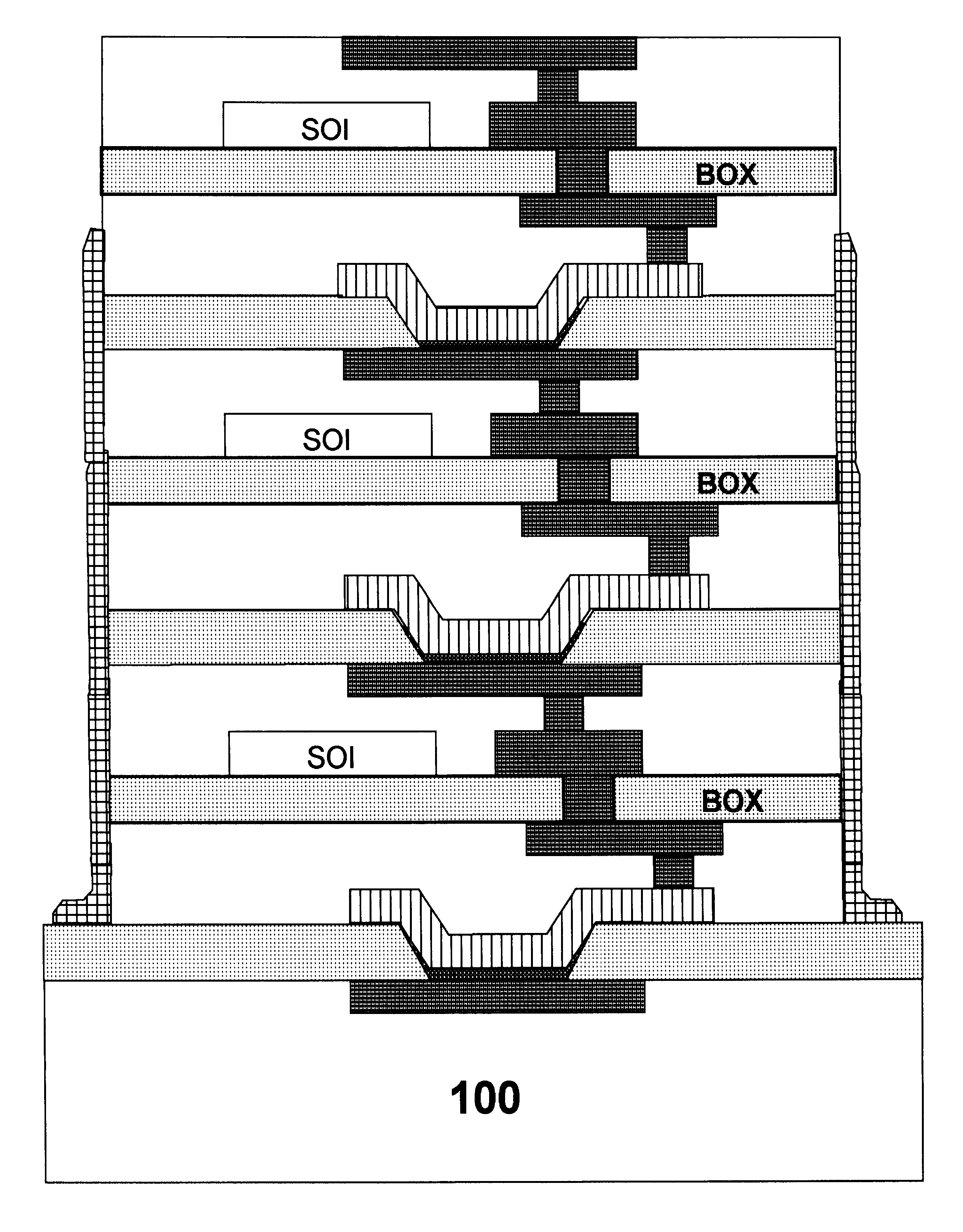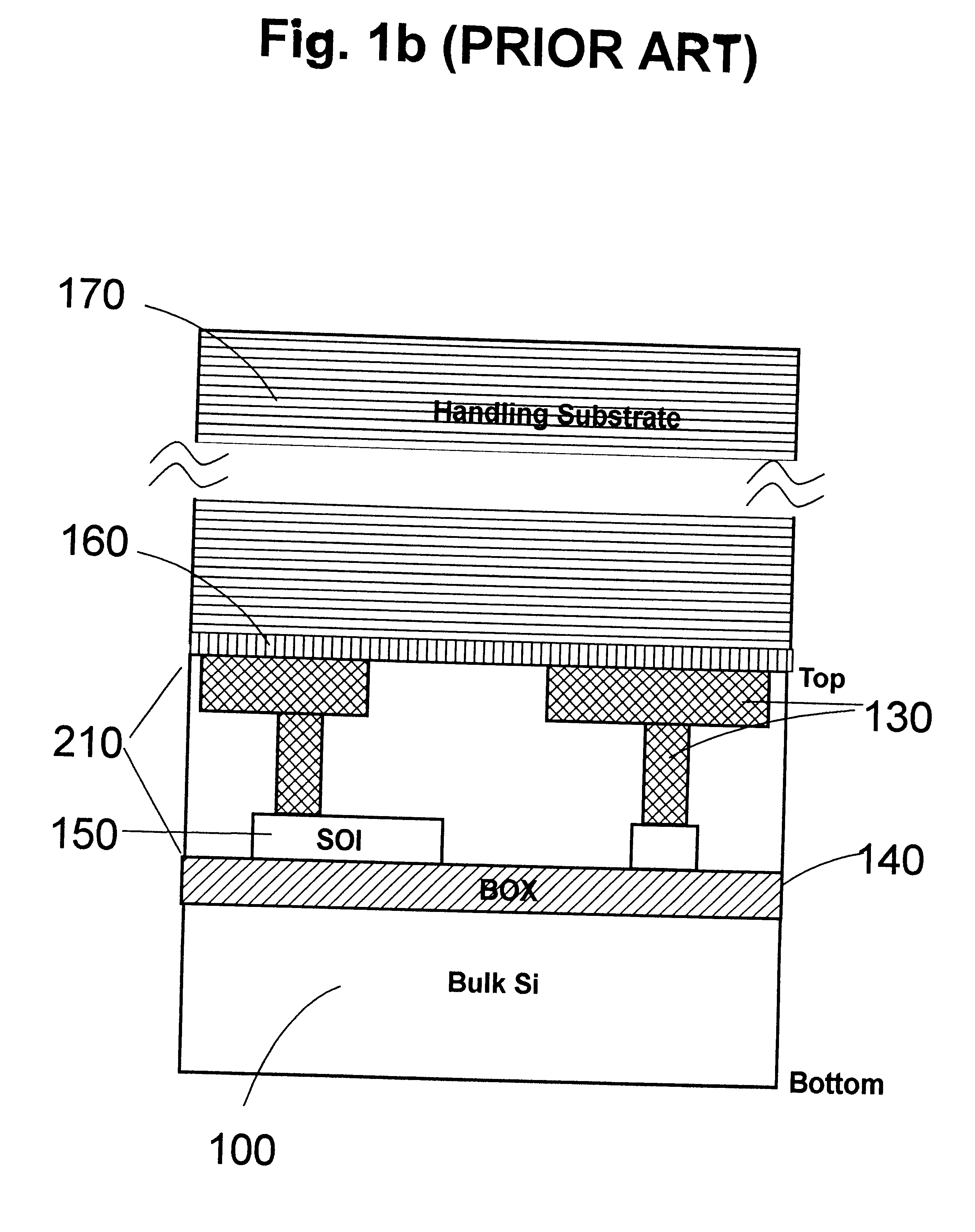Three-dimensional chip stacking assembly
a three-dimensional chip and assembly technology, applied in the direction of basic electric elements, electrical apparatus, semiconductor devices, etc., can solve the problems of inability to achieve high-level 3d integration. achieve the effect of good mechanical and thermal integrity and precise alignmen
- Summary
- Abstract
- Description
- Claims
- Application Information
AI Technical Summary
Benefits of technology
Problems solved by technology
Method used
Image
Examples
Embodiment Construction
Having by now described the wafer preparation process, the chip alignment and the attachment process applicable to a multi-layer chip stacking technology will be described hereinafter. This description will then be followed by an illustrative example.
Chip Stacking
Referring to FIG. 2, there is shown an SOI wafer having a handling substrate (170), frontside interconnection layers (210) and backside interconnection layers (220), as shown previously with reference to FIG. 1, with the SOI wafer now diced into individual chips (225). Wafer level testing can be performed prior to dicing in order to screen out defective chips.
In FIG. 3, the individual chips are mounted, an operation that requires aligning the chips and attaching them to a substrate (100). As previously stated, the substrate is either an SOI / bulk chip, SOI / bulk wafer or thin-film substrate. In all cases, they are provided with appropriate alignment patterns (240, 250) for alignment purposes and other joint structures (260, 2...
PUM
 Login to View More
Login to View More Abstract
Description
Claims
Application Information
 Login to View More
Login to View More - R&D
- Intellectual Property
- Life Sciences
- Materials
- Tech Scout
- Unparalleled Data Quality
- Higher Quality Content
- 60% Fewer Hallucinations
Browse by: Latest US Patents, China's latest patents, Technical Efficacy Thesaurus, Application Domain, Technology Topic, Popular Technical Reports.
© 2025 PatSnap. All rights reserved.Legal|Privacy policy|Modern Slavery Act Transparency Statement|Sitemap|About US| Contact US: help@patsnap.com



